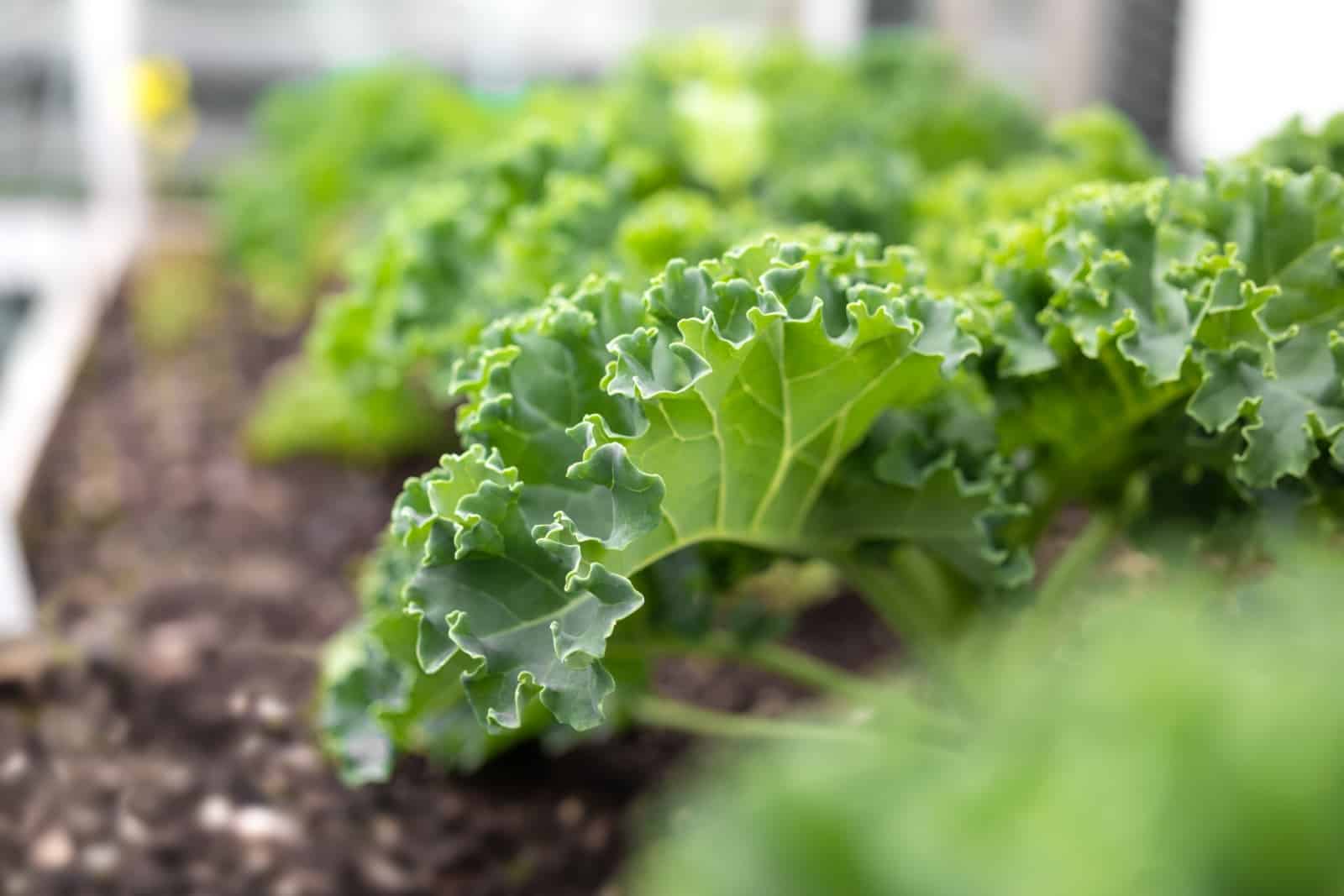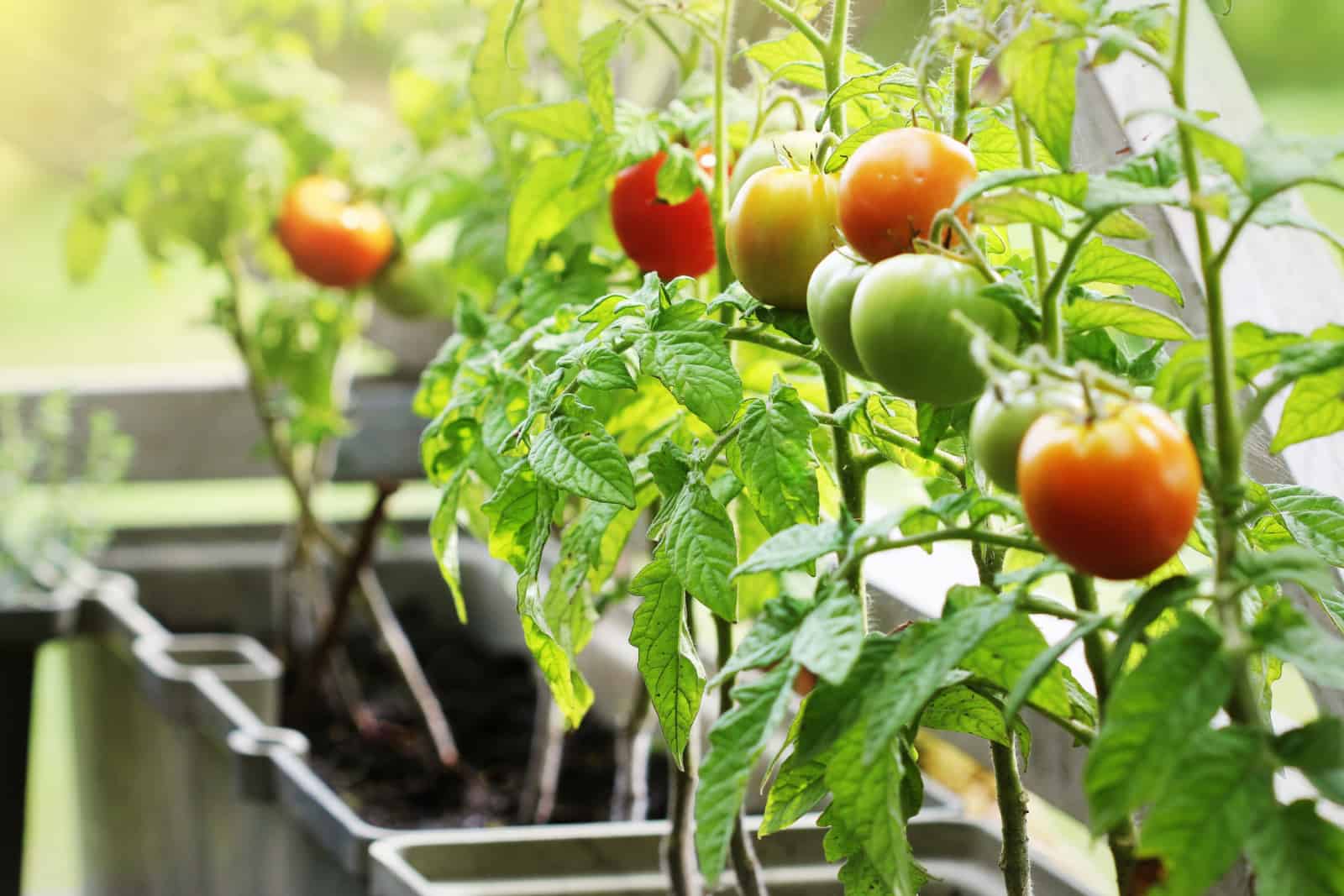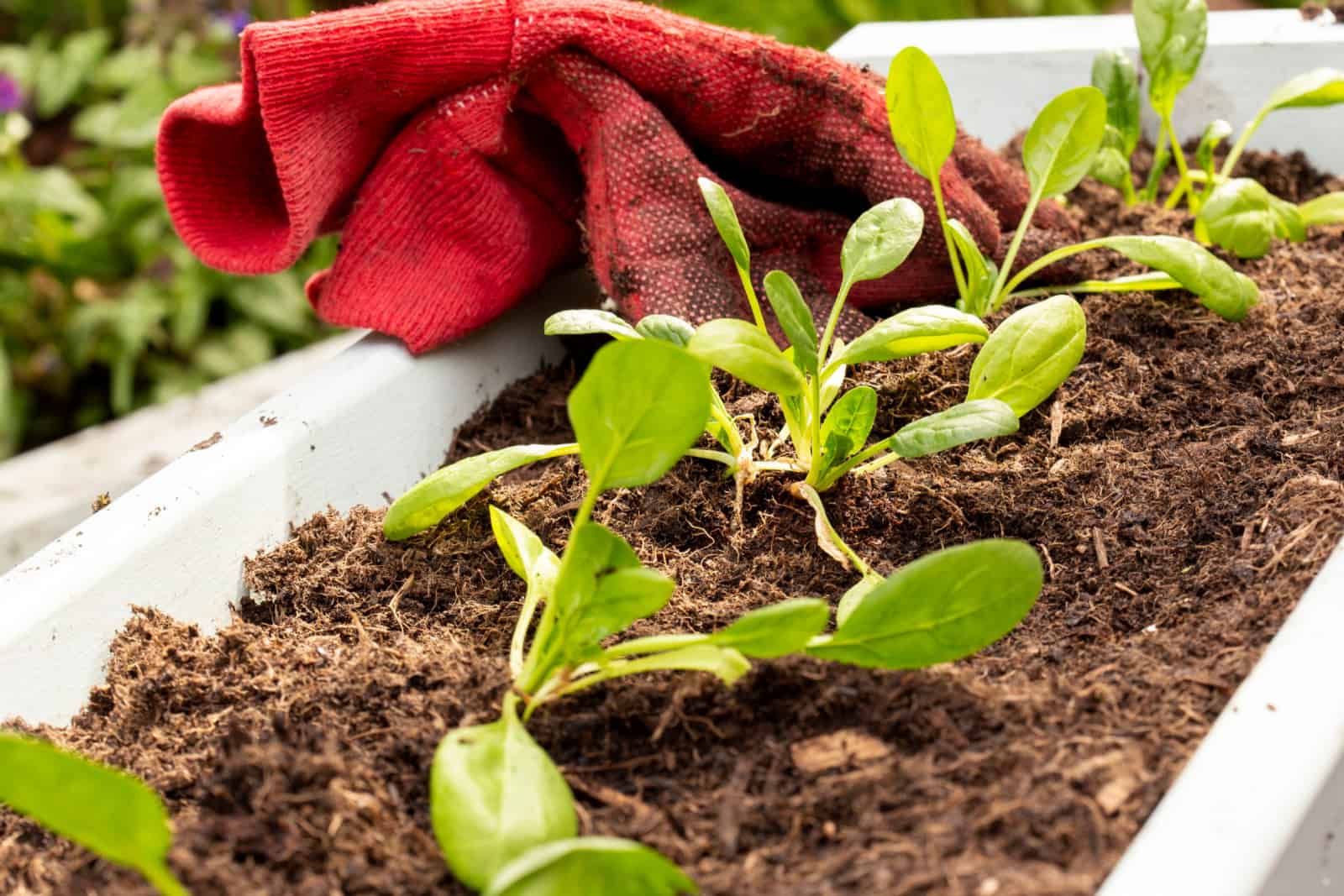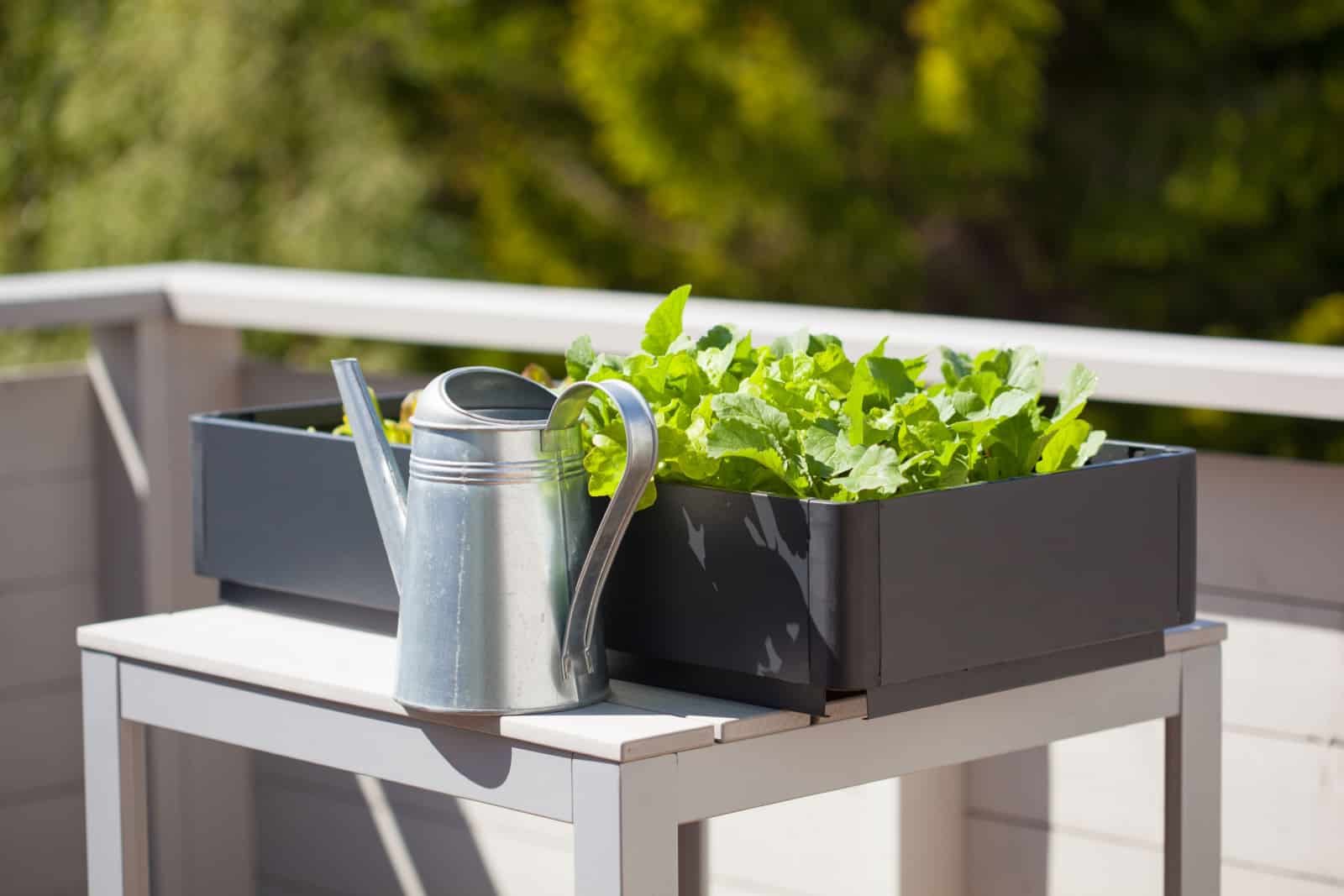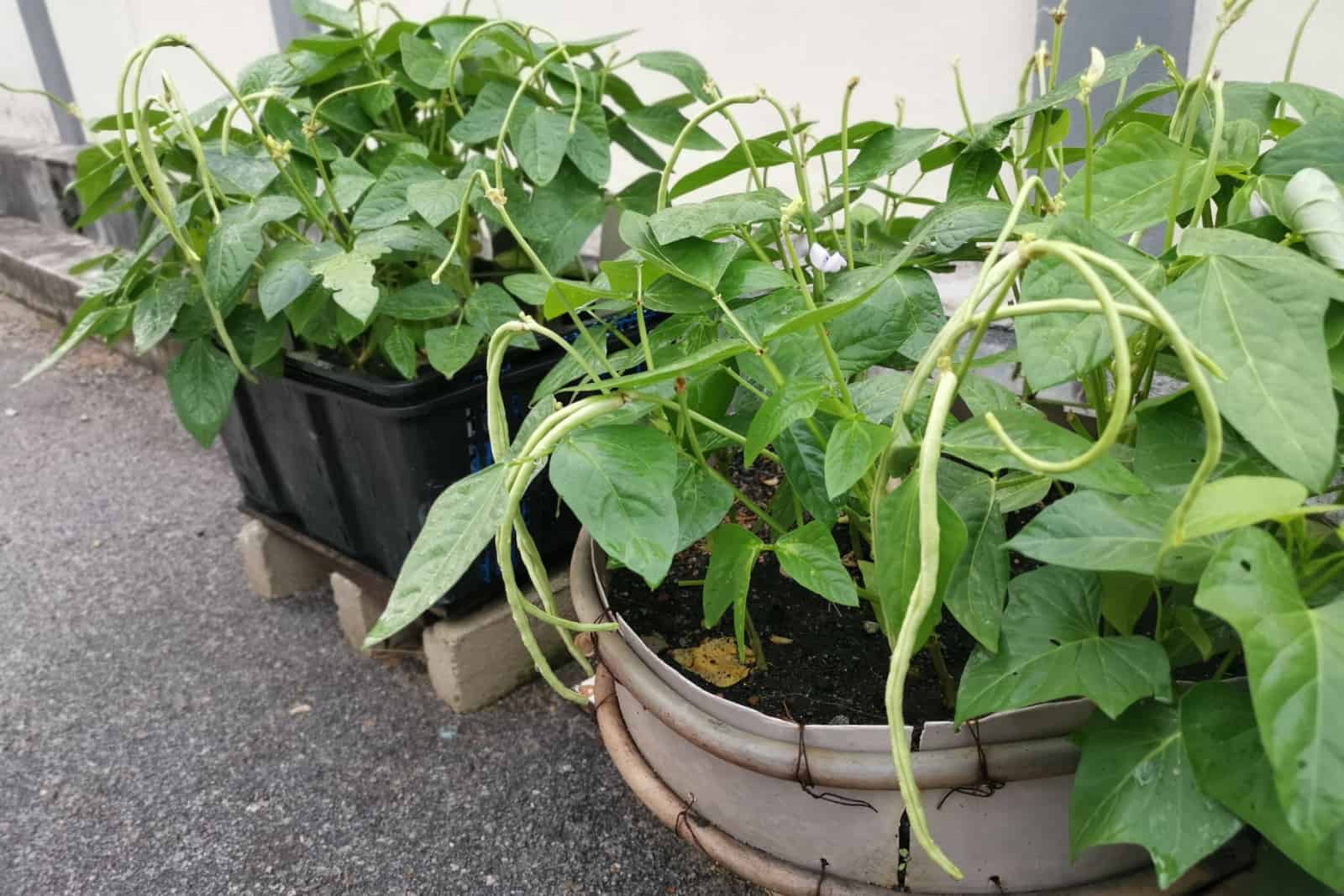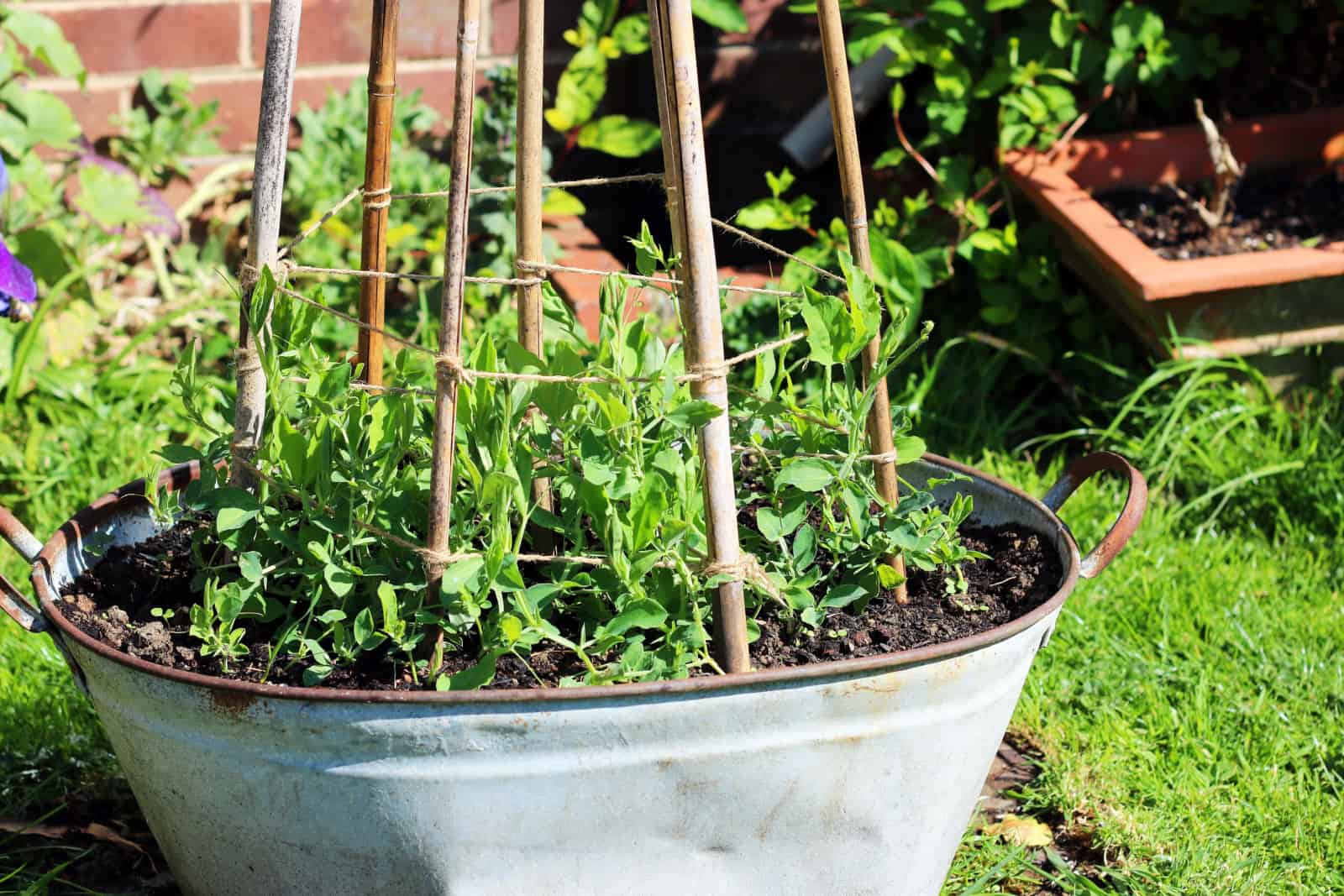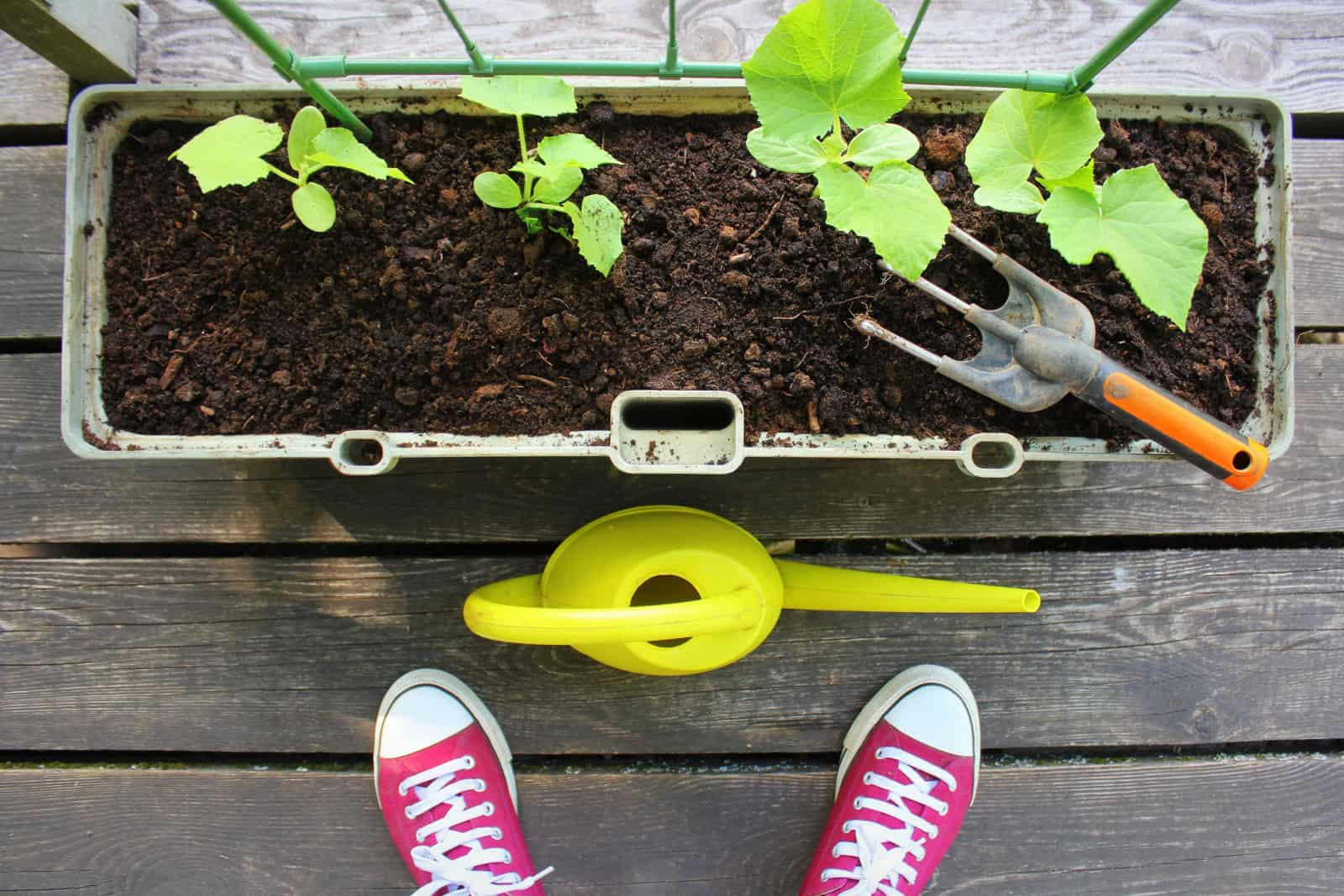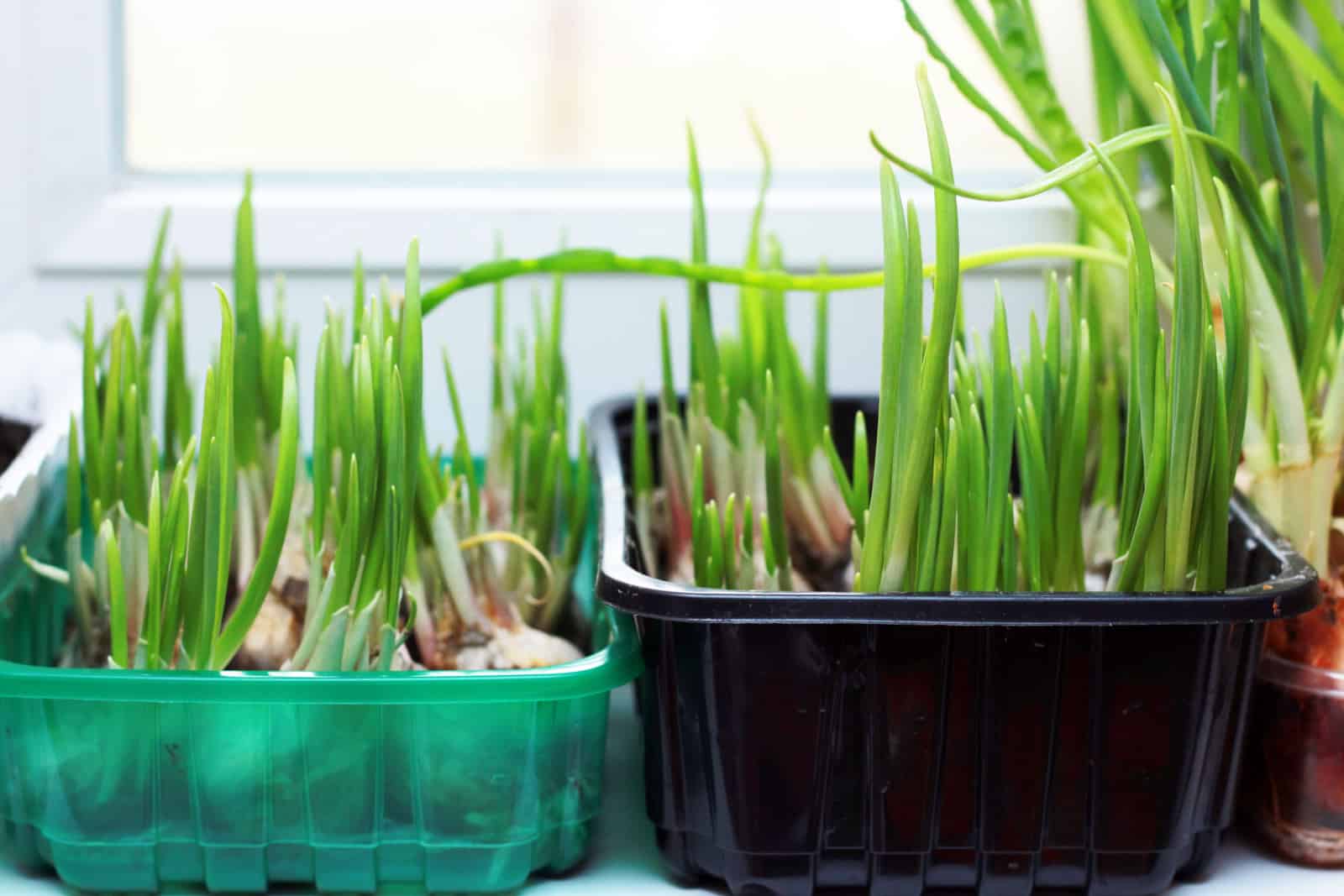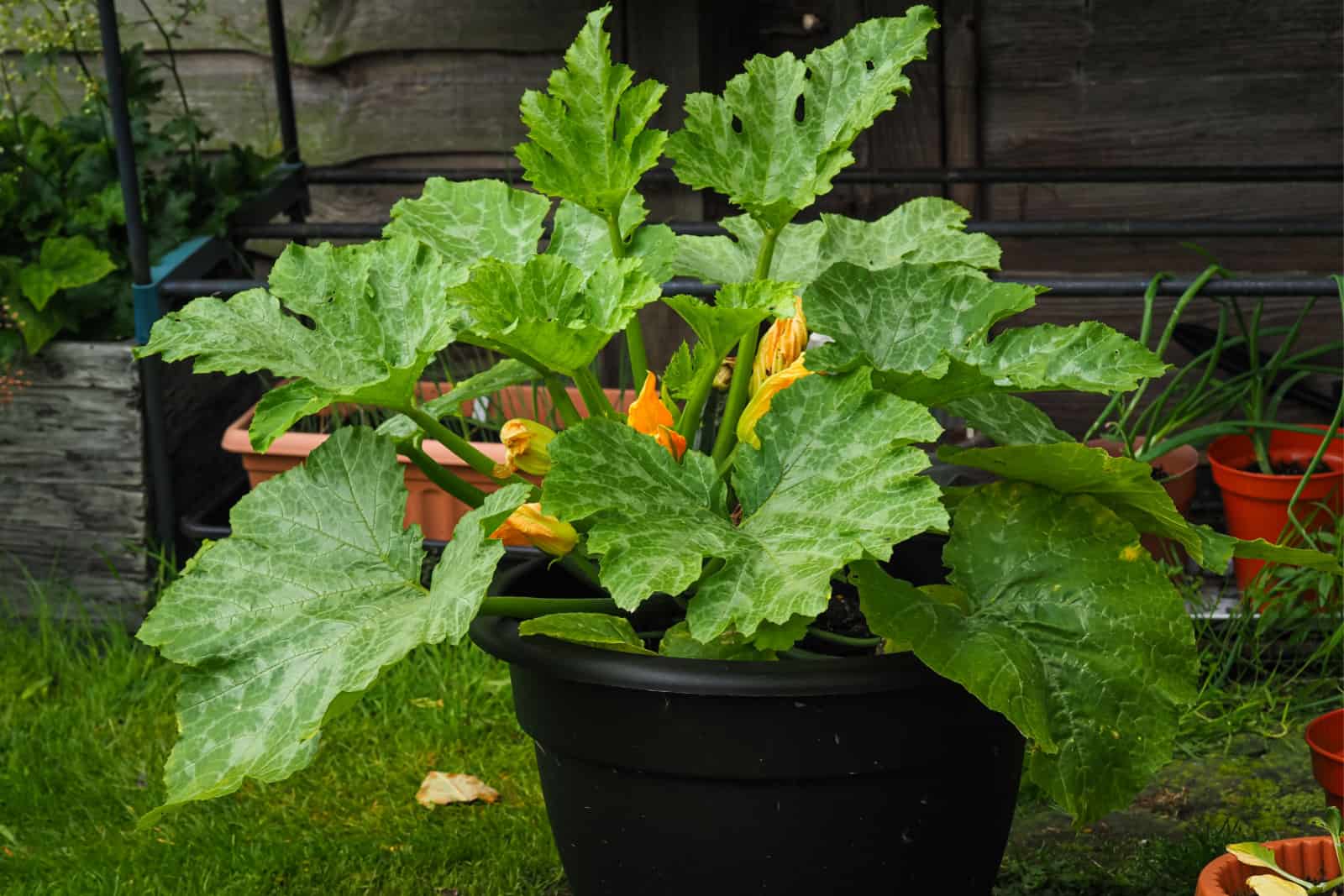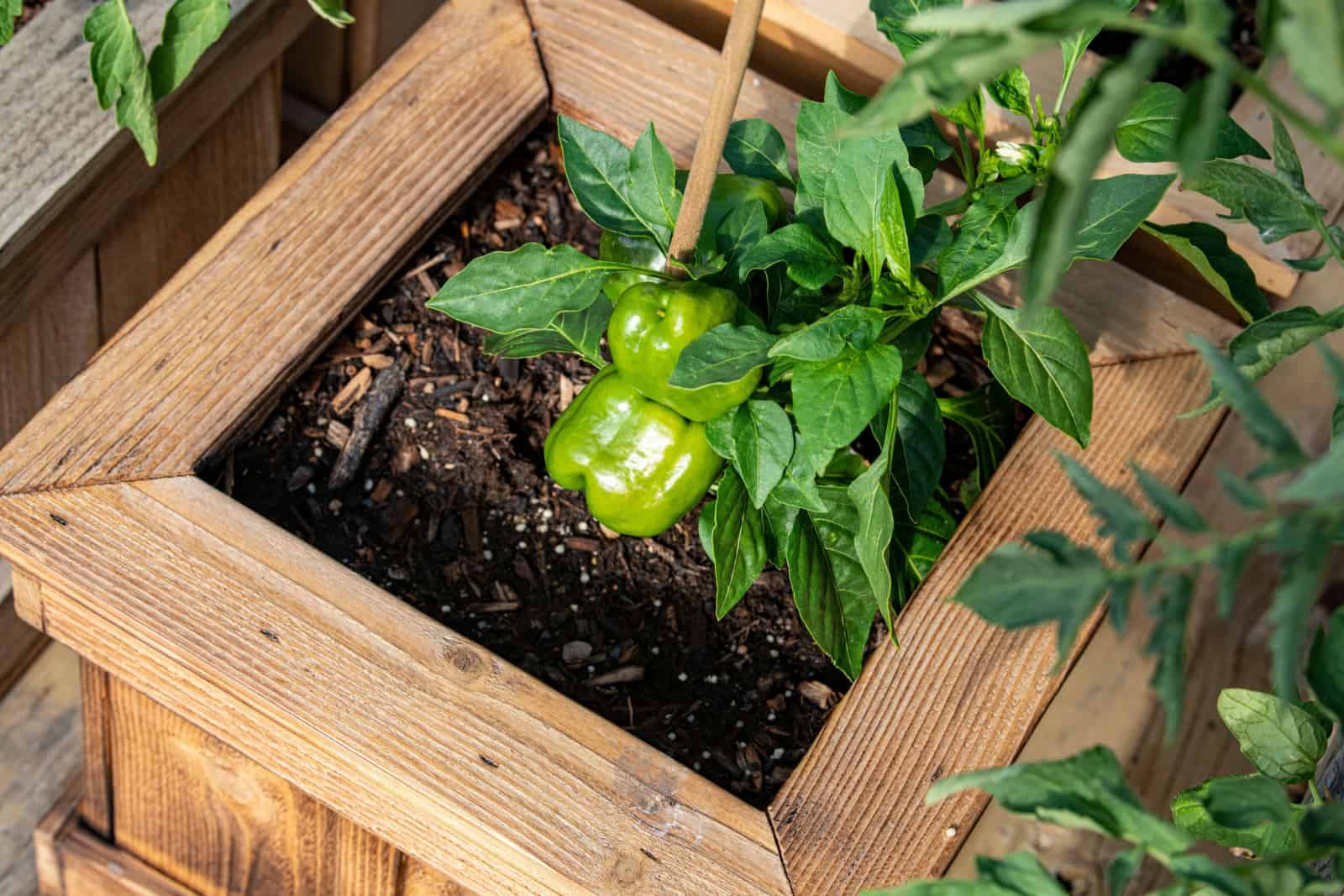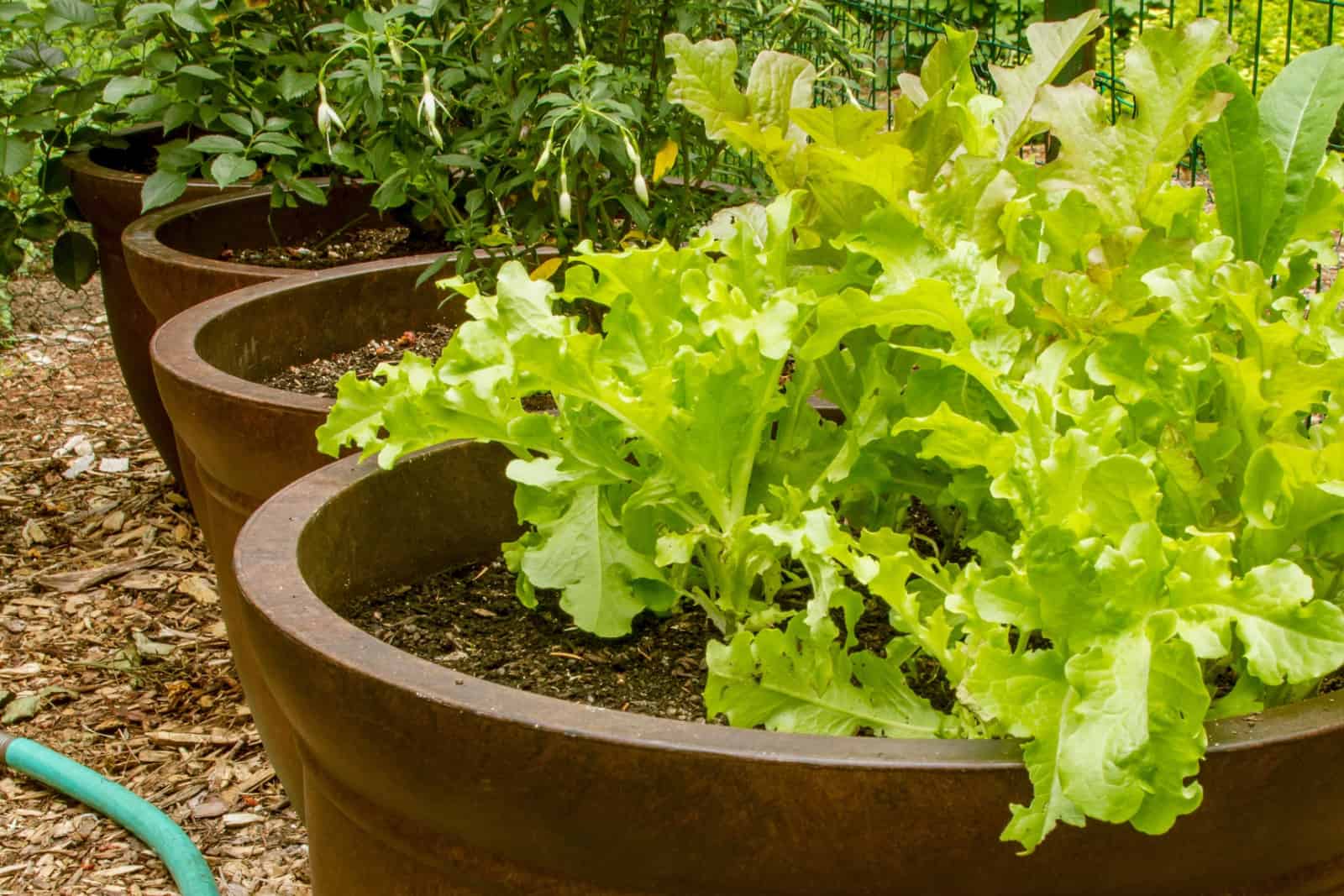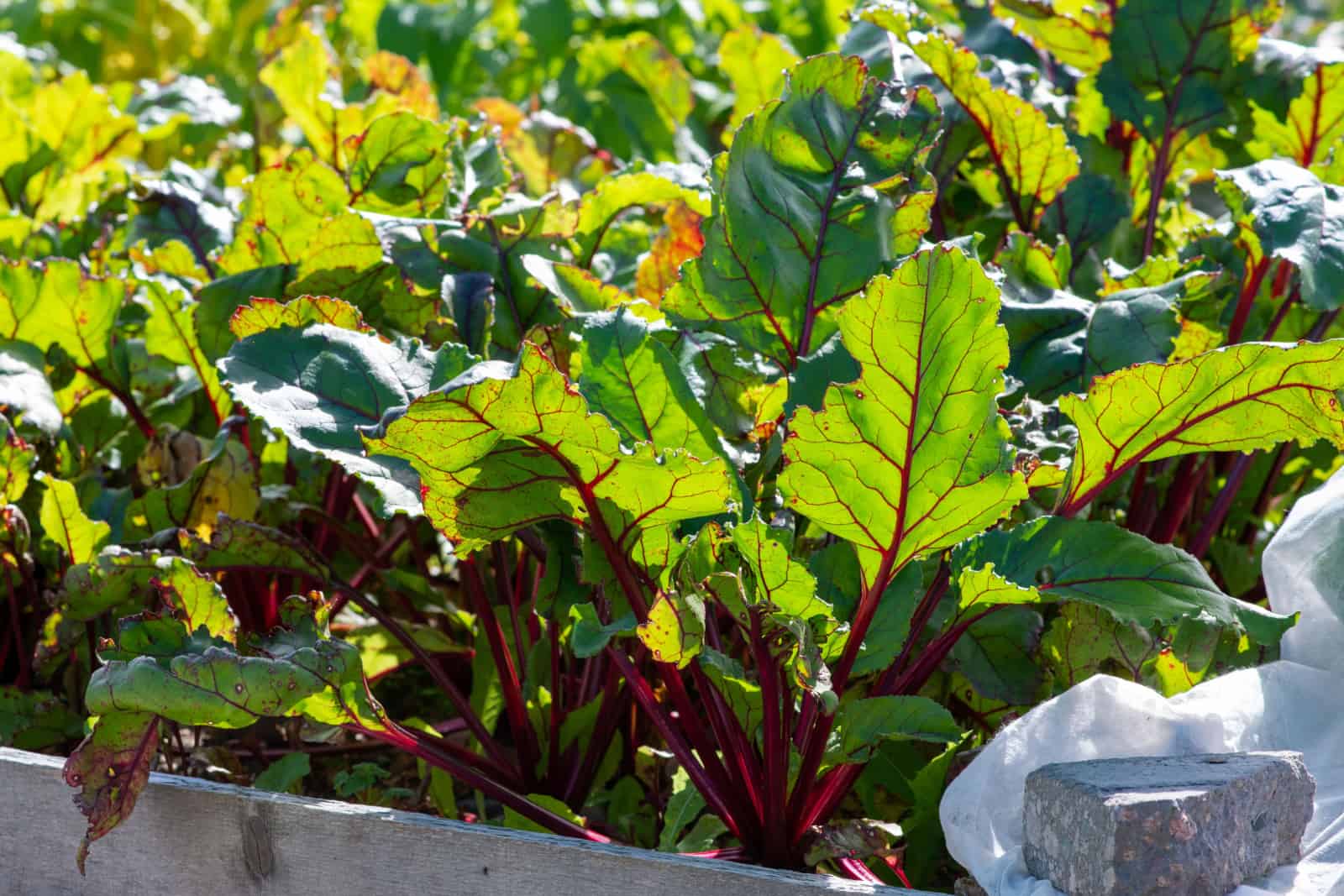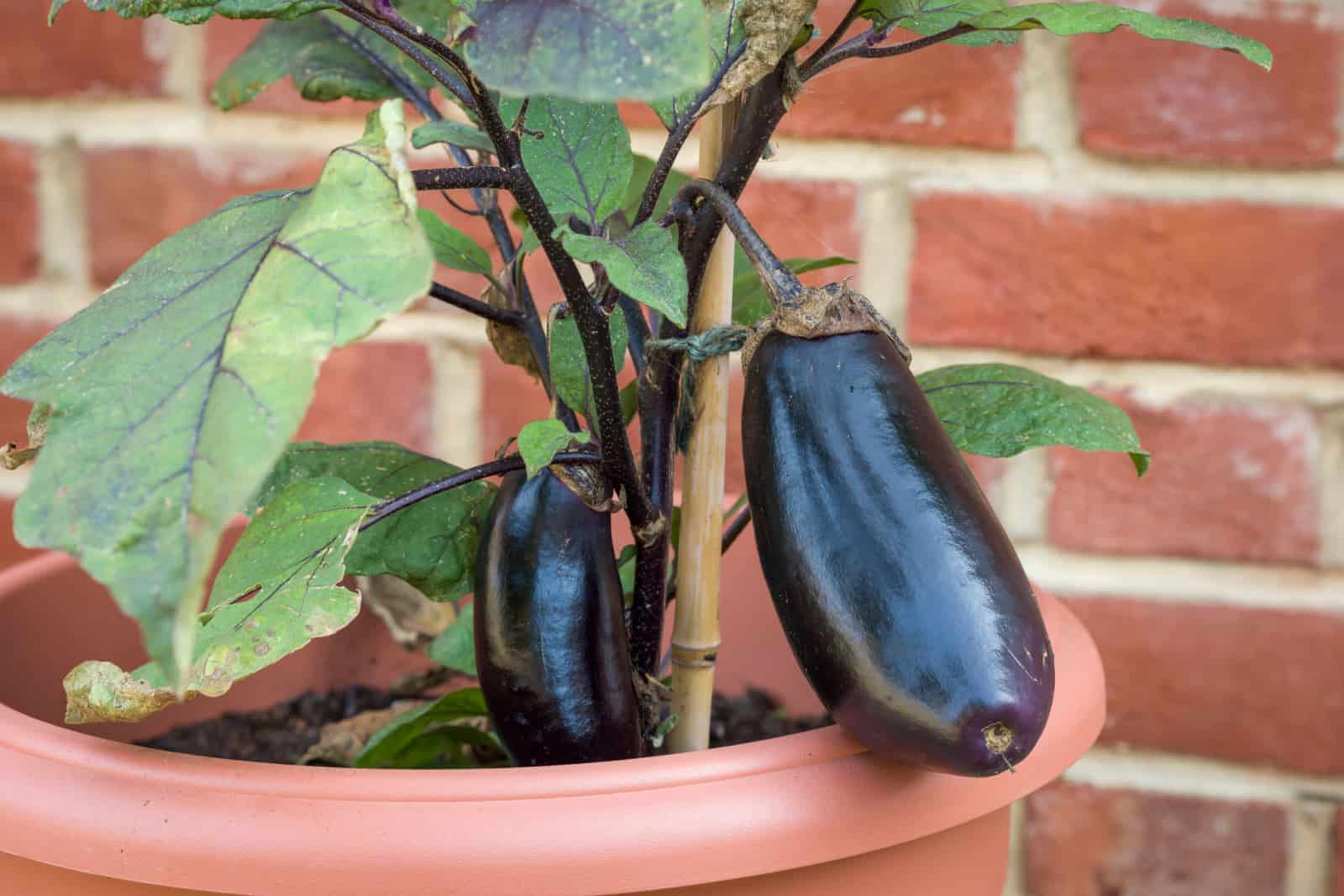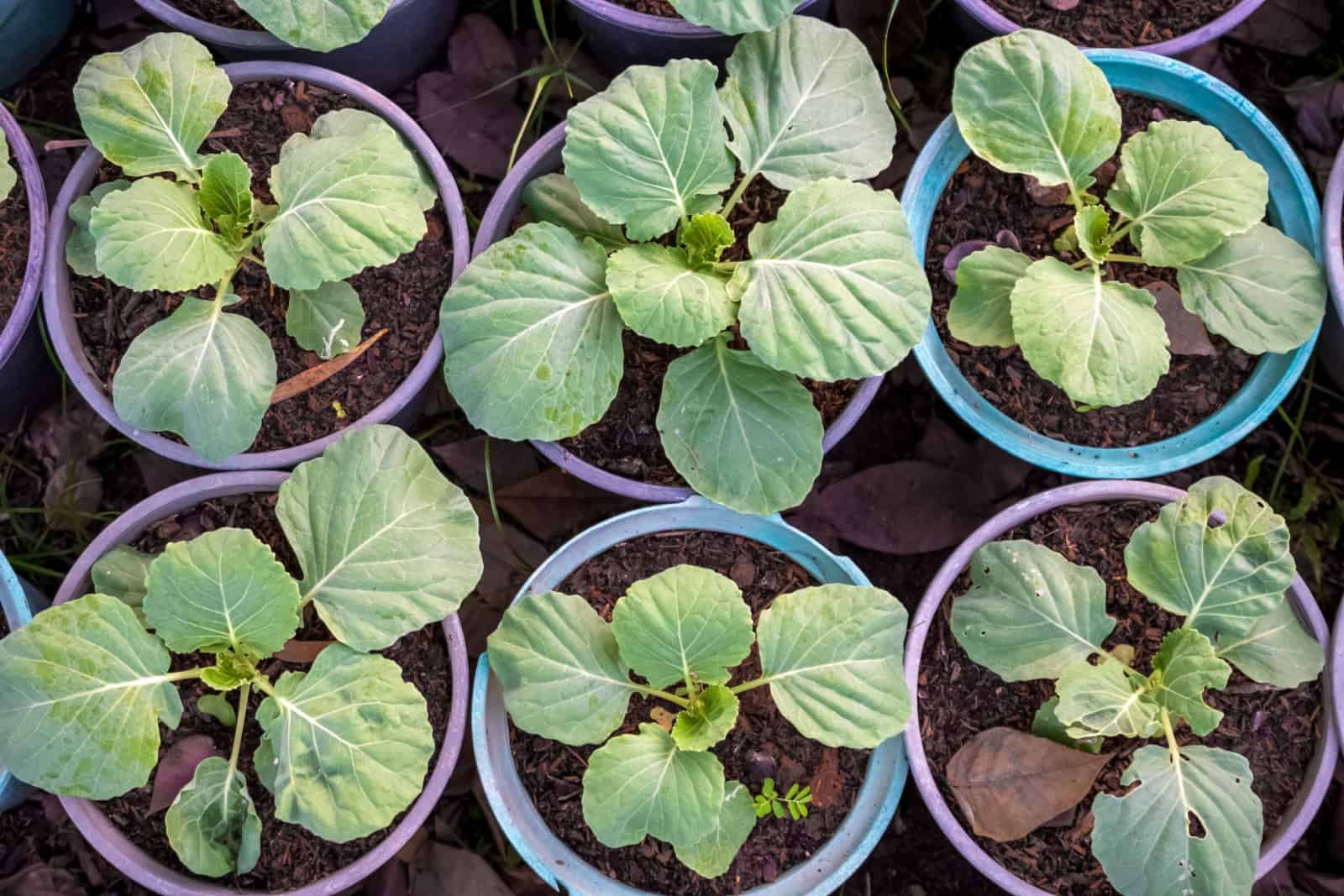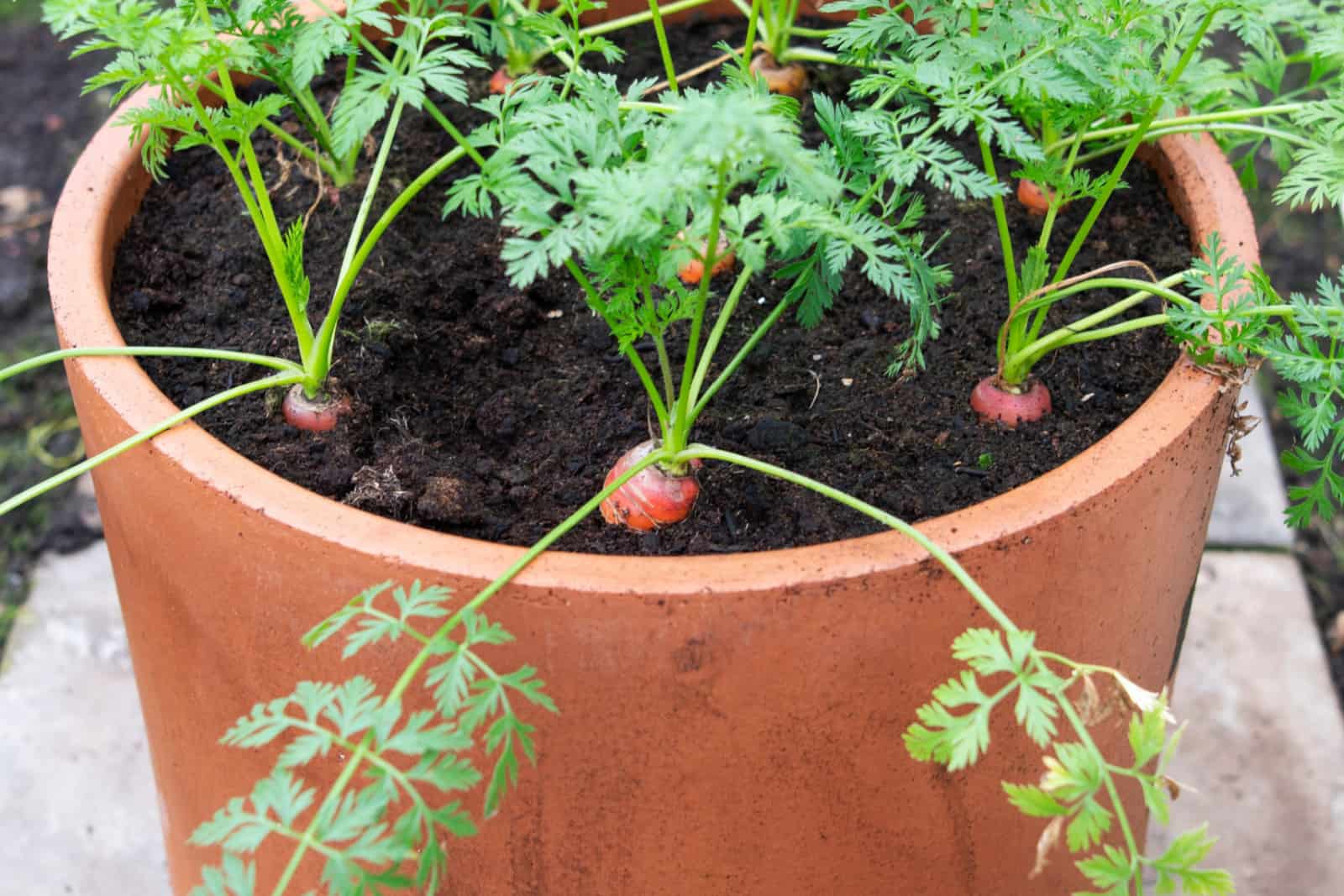If you have limited space in your vegetable garden, container gardening might be the perfect solution for you!
Growing veggies in containers comes with many benefits, including flexibility, easy maintenance, and the ability to control the growing environment.
Whether you have a small patio, balcony, or even just a sunny windowsill, you can grow a thriving vegetable garden in your own home – the trick is to choose veggies perfect for container gardening.
We are going to help you with that today!
Keep reading to find out what vegetables are best-suited for container gardening and also some tips and tricks on how to grow them.
1. Kale
Let’s start our list with some greenery!
Kale is a cool-season veggie that’s commonly used for salads and garnishes. Entire plants can be harvested, although most folks only use the tender leaves.
The kale growing stages are quite easy to track regardless of growing space, so it should be easy to grow in containers as well!
Choose a large container that has proper drainage if you plan to grow kale. Put it somewhere sunny where it can receive at least 6 hours of sunlight during the day.
The ideal potting mix drains well, although you can also add some compost to boost growth. Kale should be regularly watered to keep the soil moist, just be careful not to overwater it.
You can use balanced organic fertilizer every 4 to 6 weeks to encourage new growth and development. When harvesting, pick the outer leaves first.
2. Tomatoes
Here is an all time favorite vegetable (or should I say fruit?). Either way, tomatoes are one of the easiest plants to grow, no matter if it’s in the garden or containers on your balcony!
First choose a large container with sturdy support for the plant, such as a trellis or cage. These sun-loving plants should receive about 6 to 8 hours of direct sunlight each day.
Well-draining and nutrient-rich soil is crucial for tomato growth. Using balanced tomato fertilizer every 2 to 3 weeks is key to getting more tomatoes each season. Keep the soil moist but not waterlogged.
What’s also great about container gardening is that your plants are no longer exposed to the numerous pests roaming around your garden. Still, you should keep an eye out for these pesky critters.
Enjoy your delicious and juicy tomatoes once they are fully ripe!
3. Spinach
If there’s one thing that we’ve learned from cartoons, it’s that spinach makes you big and strong. And this is completely true since these veggies are packed with minerals and nutrients!
Growing spinach indoors is pretty easy. First find a container that is at least 6 inches deep so that the spinach has enough space for its root system to grow. Spinach can grow in both full sun and partial shade, though it does better in sun.
However, you should put it in partial shade during the hot summer months or you’ll end up with dry and burnt spinach.
Well-draining potting mix amended with compost makes a perfect environment for spinach to develop. Keep the soil moist consistently by watering regularly, especially during dry periods.
Always place the seeds in containers and thin out seedlings if they become overcrowded, leaving a few inches of space between plants.
Start harvesting the outer leaves first. Continuous harvesting encourages new leaf growth and extends the harvesting period.
4. Radishes
Radishes are delicious root vegetables that need a lot of space to grow and spread, which is why you should choose a container that is 6 inches deep. Use well-draining soil and sow radish seeds directly into the container.
Place your baby radishes in a location with full sun, though they can also grow in partial shade as well.
They should be frequently watered to keep the soil moist. If you want, you can combine them with cucumbers since these veggies grow well together in containers.
When fertilizing, make sure to do it sparingly to avoid excessive leaf growth and encourage root development. These plants take about three to five weeks until they are ready to be harvested.
5. Beans
If you are considering growing beans in containers, start off by choosing a container that is at least 8 to 10 inches high so that it can accommodate the lush growth of bean plants.
Sow the seeds directly into well-draining potting soil, spacing them according to the instructions displayed on the seed packet. Keep the soil moist but not waterlogged.
These sun-loving plants need a lot of sun to grow and thrive, so make sure to place them somewhere sunny.
You will probably have to provide them with some type of support such as a stake or trellis to help them climb and grow upright.
You can fertilize them once a month with a diluted liquid vegetable fertilizer if you didn’t mix in some slow-release before sowing the seeds.
They should be ready for harvesting in 45 to 65 days. Once the pods are medium sized and firm, you should go ahead and pick them.
6. Peas
Here is yet another plant that’s perfect for growing on a balcony!
Similarly to beans, you will need a container that’s at least 8 to 10 inches deep so that they can accommodate the plant’s growth. You will also need stakes or trellises for the plants to climb on.
The seeds should be planted directly into a container filled with well-draining soil. Choose a sunny location and water regularly to keep the soil moist.
These plants generally don’t need much fertilization, but they can benefit from some organic fertilizer during the growing season. Harvest them once the pods are plump and full. It should take about 60 days until they are ready for harvesting.
7. Cucumbers
There are numerous tips for growing perfect cucumbers in the garden, but today let’s discuss some tips for growing them in containers!
You should start by selecting a container that is at least 12 inches deep since these plants grow quite vigorously.
You should use a well-draining soil that is enriched with organic matter. Trellises or stakes are also required for this vining plant to climb on. Put them in a location that receives full sun, as cucumbers thrive in warm and sunny conditions.
It is very important to keep the soil consistently moist, especially during hot and dry periods. Be on the lookout for cucumber beetles or powdery mildew as these two are common cucumber issues.
Since these veggies are heavy feeders, you can add a slow release fertilizer at the beginning of the season and then some diluted fertilizer every 3 to 4 weeks.
They should be harvested once they’ve grown about 6 to 8 inches long.
8. Garlic
Did you know that you can grow an endless supply of garlic at home?
That’s right, by following a few simple steps, indoor garlic can grow like crazy!
Start off by selecting a container that is at least 8 inches deep so that the garlic bulbs have enough room to grow and spread. Fill the container with an organic potting soil that drains well.
Plant the garlic cloves about one inch deep, spacing them about 4 to 6 inches apart. The best time to plant them would be in the fall.
Put the container in a location that receives full sun, although these plants can also tolerate some shade. Water your garlic once the topsoil feels dry.
You can add some balanced organic fertilizer sparingly once or twice during the growing season. Harvest the bulbs once the foliage turns yellow and begins to dry out, which is typically 8 to 10 months after planting.
9. Zucchini
If you want to grow zucchinis in a container, it’ll need to be about 18 inches deep. This is required because of the extensive growth of their root systems.
Use soil that drains well and is enriched with compost or organic matter. Put the container in a sunny location so that the plant can receive about 6 to 8 hours of sunlight each day.
The plant should be watered thoroughly and regularly. Water when the top few inches of the soil dry out.
Add some fertilizer every 2 to 3 weeks to support their vigorous growth and fruit production. If you are growing zucchini vertically, you will need to use stakes or a trellis.
When your zucchini grows about 6 to 8 inches long, they are ready to be harvested. Smaller fruit tend to be more tender and flavorful.
10. Peppers
Peppers grow perfectly fine in containers. Now you can have red hot chili peppers on your balcony!
Choose a container that’s about 12 inches deep and fill it with well-draining soil mixed with organic matter. Put it in a sunny spot so that the plant can receive about 6 to 8 hours of sunlight each day.
Keep the soil evenly moist by watering regularly. Avoid overwatering by checking the soil before you water the plant again. If it feels dry, it is time for water.
Add some fertilizer to promote healthy growth and fruit production.
You should also provide some type of support, such as a cage or stage. This is done to prevent them from toppling over as they grow.
Once the peppers have reached the desired color and size, they are ready to be harvested.
11. Lettuce
Lettuce is a fast-growing plant that can be harvested multiple times during the growing season.
If you want to grow it in a container, start off by getting one that’s around 6 inches deep because these veggies have shallow roots. Use soil that drains wells and is high in organic matter.
Put your baby lettuce somewhere sunny. However, during hot summer days, you should put it in partial shade to prevent the lettuce from bolting.
Keep the soil consistently moist. Mulching can help the soil retain moisture. Fertilize sparingly every few weeks to provide essential nutrients.
When harvesting, start with the outer leaves first so that the inner leaves continue to grow. You can plant more lettuce during the growing season as it’s a fast grower!
12. Chard
Chard is one of the easiest vegetables to grow from seeds. This cool-season crop can tolerate lower temperatures, making it suitable for fall and winter container gardening.
Use a container that’s around 6 to 8 inches deep and fill it with nutrient-rich, well-draining soil.
It grows best in sunny locations although it can tolerate some shade. If you live in a warm region, keep it in partial shade during hot periods to prevent the leaves from scorching.
Water it regularly and add some nutrients to boost the plant’s growth. Once they reach the desired size, start harvesting the outer leaves first, leaving the inner ones to continue growing.
13. Eggplant
Since eggplants are highly susceptible to garden pests, you should try growing them in containers instead. Start by selecting a container that’s about 12 inches deep.
These plants love a lot of nutrients so make sure that the soil is well-draining and nutrient-rich. Add some fertilizer during the eggplant growing stages to boost its growth.
Put your eggplants somewhere nice and sunny. Don’t forget to water them thoroughly and allow the soil to dry out between waterings.
Stake or provide support for the eggplant as it grows, especially if it is a larger variety, to prevent the stems from breaking. Once they have grown and have glossy, firm skin, it’s time for harvesting.
14. Collard Green
Here is yet another leafy green veggie that will go great in a container garden!
Collard greens should be grown in a container that’s about 8 inches deep. It thrives in a nutrient-rich soil that drains well.
Once planted, put it in a place where it can receive about 6 hours of direct sunlight each day. Keep the soil moist, but not waterlogged. You can add some mulch to help retain moisture.
For fertilization, you can use a slow-release fertilizer or opt for a balanced one that should be applied every 3 to 4 weeks during the growing season.
Just like with the other leafy veggies we’ve mentioned, start harvesting the outer leaves first.
15. Carrots
We are finishing our list with another famous root vegetable!
Carrots can be easily grown in containers. All you have to do is find a container that’s about 12 inches deep so that they have enough space to develop properly.
Use loose and well-draining soil that’s free of clumps or stones (these could impede proper carrot development). Put the container somewhere sunny, although these plants can tolerate some partial shade as well.
Water them regularly, but be careful not to overwater them as this can lead to rotting. If the soil feels dry, you should water the plant.
Once the seedlings emerge, thin them so that the carrots have enough space to grow to the desired size. Don’t forget to fertilize them, but stay away from nitrogen-rich fertilizers as they promote leaf production.
Harvest the carrots when they reach a suitable size and color. Gently loosen the soil around the roots and pull them out.
Good luck with your container garden.
Until next time!

